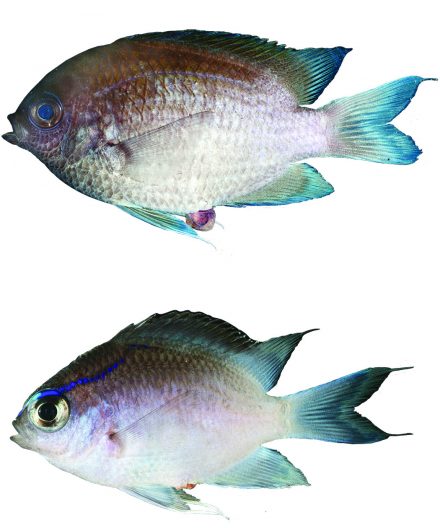Capstone Highlight: New Species of Damselfish
Capstone research projects provide an exciting opportunity for students to put classroom learning into practice—and sometimes even publish their work. These senior projects are the culmination of the undergraduate experience here at SAFS.
Emily McFarland (BS 2020) published her capstone, “A new species of Chromis damselfish from the tropical western Atlantic (Teleostei, Pomacentridae),” this past December. The new species—Chromis vanbebberae —was revealed through phylogenetic analyses to be distinct from Chromis enchrysurus, commonly known as the Yellowtail Reeffish.
Emily recalls during her first tour of the UW Fish Collection as a freshman, it was mentioned that students sometimes get the opportunity to describe new species.
“I became fixated on that idea in addition to working in the fish collection lab in general,” she said. “I started working with Dr. Luke Tornabene in the spring of that same year while taking FISH 311 (Biology of Fishes), helping with the molecular work for dwarf goby phylogeny research.”
Looking to get an early start on her capstone, in her junior year, she discussed the possibility of describing a new species with Luke. He pointed her in the direction of a suspected new species of damselfish that had been observed on expeditions in the Caribbean as part of the Smithsonian’s Deep Reef Observation Project. It was the perfect opportunity to apply her growing knowledge in systematics, phylogeny, and taxonomy.
The damselfish Chromis enchrysurus was initially described in 1882. That description was later revised in 1982 to account for an observed color morph that possessed a white tail instead of a yellow tail. Emily’s study would definitively show that the white-tailed damselfish is actually its own distinct species.
In her paper, she writes, “the discovery of a new species within a conspicuous group, such as damselfishes, in a well-studied region of the world highlights the importance of deep-reef exploration in documenting undiscovered biodiversity.”

